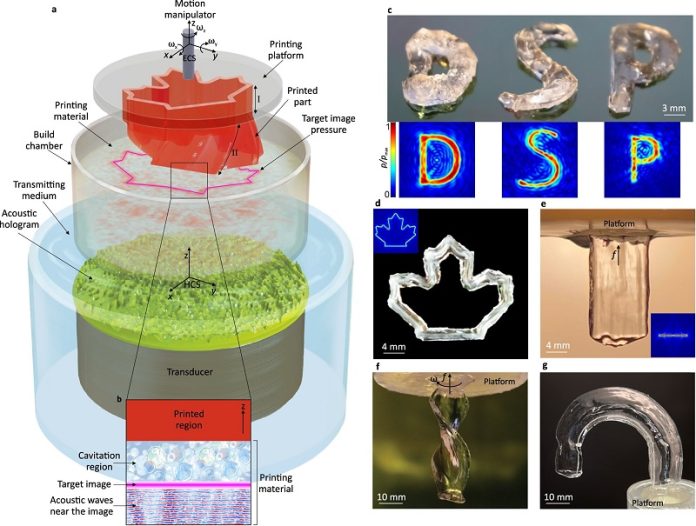
Researchers at Concordia University have developed a groundbreaking method of 3D printing using sound waves, which they believe could revolutionize several industries.
This new technique, called Holographic Direct Sound Printing (HDSP), is faster and more energy-efficient than current 3D printing methods and can create more complex objects.
The team, led by Professor Muthukumaran Packirisamy from Concordia’s Department of Mechanical, Industrial, and Aerospace Engineering, introduced this innovative process in a recent article published in Nature Communications.
The HDSP method builds upon earlier research from 2022 that explored how sound can create intense heat and pressure in tiny bubbles—called cavitations—to harden resin into complex shapes.
This technique uses sound waves to trigger chemical reactions that form solid objects from liquid resin.
What makes HDSP particularly special is the use of acoustic holograms. These holograms act as blueprints for the 3D-printed object, containing cross-sectional images that guide the printing process.
By using sound waves to control the shape of these images, the printing process happens much faster and more efficiently.
Unlike traditional 3D printing methods, which build objects layer by layer (or voxel by voxel), HDSP can create entire objects at once.
One of the most exciting features of this new method is its speed. According to Packirisamy, HDSP can improve 3D printing speed by up to 20 times while using less energy. The process is also flexible, allowing the shape of the object to be changed during the printing process. For example, multiple shapes or materials can be combined to create more complex structures.
The use of sound waves adds another advantage—acoustic holograms can store information for several objects in a single hologram. This means that multiple objects can be printed at the same time in different locations within the printing material.
This technological leap opens up a wide range of possibilities across various fields, from medicine to aerospace engineering.
In the medical field, HDSP could be used to create complex tissue structures, deliver drugs to specific areas in the body, and engineer advanced tissue treatments.
For example, it could lead to new types of skin grafts that help wounds heal faster or improve how medications are delivered to targeted areas for more effective treatment.
One of the most fascinating potential applications of HDSP is its ability to print inside the human body or behind solid objects. Because sound waves can penetrate opaque surfaces, this technique could be used to repair damaged organs or fix delicate components deep within machinery, such as inside airplanes.
Packirisamy compares this innovation to the major advances seen in light-based 3D printing, which evolved from slow, single-point printing to much faster, layer-based methods. “You can imagine the possibilities,” he says.
“We can print behind walls, inside tubes, or even inside the body, and the technology is already approved for medical use.”
This revolutionary method of 3D printing could change how we approach everything from manufacturing to healthcare, creating new opportunities for innovation across multiple industries.



